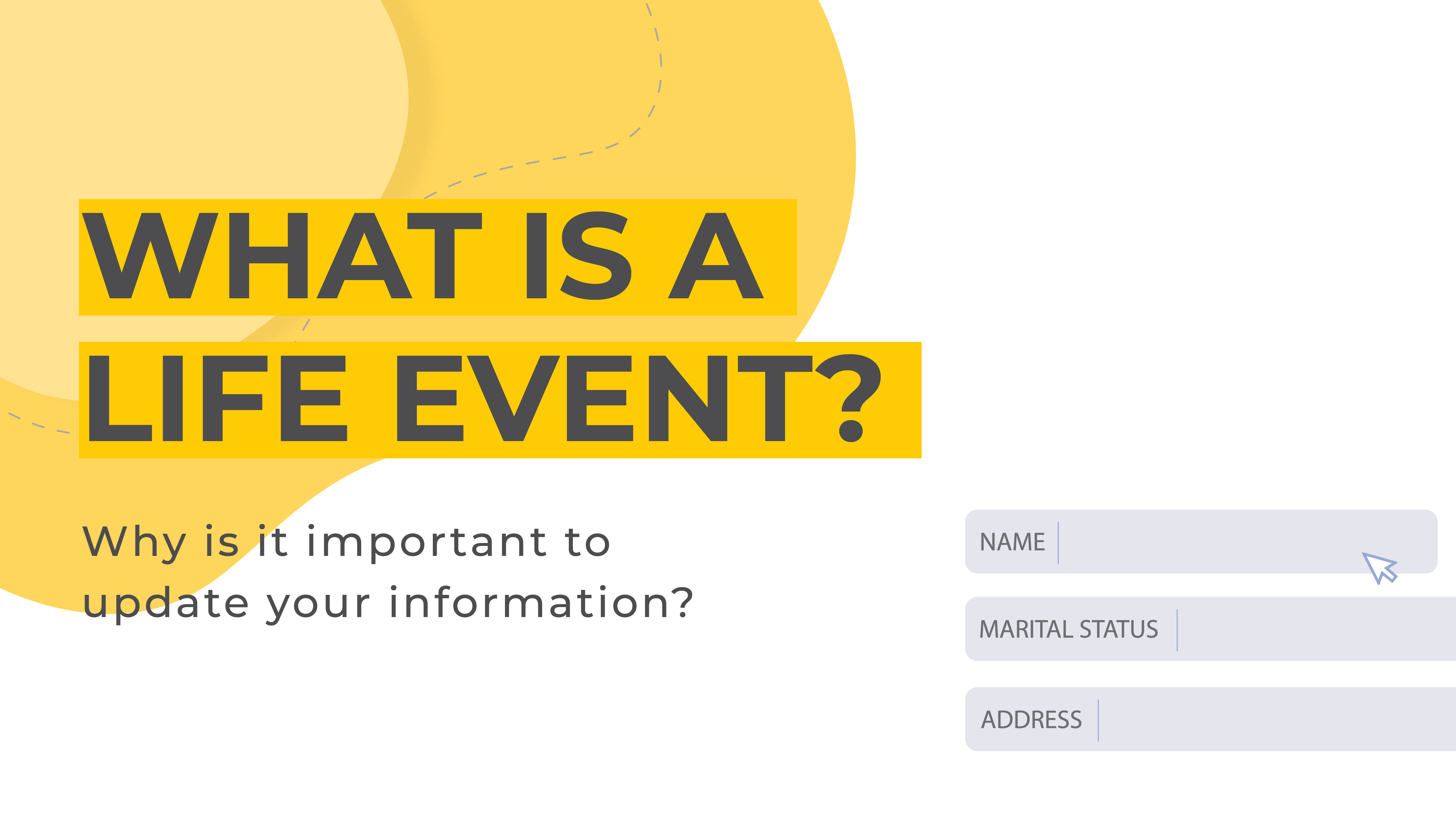What is a Life Event and Why It’s Important to Update Your Information?
By: Benefits by Design | Tuesday February 9, 2021
Updated : Tuesday November 14, 2023
Think about the last five years of your life. What’s changed in that time?
We’re willing to bet that you’ve experienced at least one life event that could affect your employee benefits in a big way. Important life events are happening all the time, but is your information being updated to match?
Let’s take a closer look at life events and why it’s crucial that employee information remains up to date. We’re not just being sticklers, we promise.
What is a Life Event?
A life event can generally be defined as a change in a person’s life that may affect their benefits coverage. Life events are common and bound to happen over time, particularly with long-standing employees. It’s important to ensure that these events are captured and that employee information is updated.
Inaccurate employee information is among the most common errors a Plan Administrator may face.
Common Life Event Examples
Life events cover a wide variety of changes for an employee. Some of the most common changes to look for include:
- Changes in marital status, either through marriage, separation, divorce, or other means. Keep an eye out for name changes that often go along with this!
- New additions to families, such as the birth or adoption of a child, or even the merging of two families
- Death of a dependent or beneficiary
- Promotion or salary increase
- Moving to a new address
- Dependent childrens’ 21st or 26th birthdays, where they may lose eligibility under a parents’ benefits plan
- Changes in an alternate group benefits plan
Updating Your Information After a Life Event
To illustrate the importance of updating information (and what can happen if you don’t), let’s take a closer look at some of the examples above.
Changes in Marital Status
Let’s say you’ve just gotten married — congratulations!
Until now, your beneficiary (that is, the person designated to receive certain benefits payouts) has been your mom. When you married, you intended to change your beneficiary to your new spouse. However, you forgot to inform your Plan Administrator or file the paperwork. Without an update, any applicable benefits payouts will be to your named beneficiary, regardless of your intention to leave them to your new spouse. That could leave your family in a tight spot.
The same goes for if you were to divorce and remarry. If you never get around to removing your ex-partner as a beneficiary and adding your new one, applicable benefits payouts would be paid to your ex-partner rather than your new spouse. Try explaining that one.
New Additions to Families
New dependents should be added to your benefits plan, too! For example, the birth or adoption of a new child, or the merging of two families into a blended family. It’s important to add any new dependents to the plan in a timely manner to avoid becoming a late applicant, which can negatively impact their coverage.
Death of a Dependent or Beneficiary
Updating your information may be the last thing on your mind in this situation, but as soon as you’re able, speak with your Plan Administrator to review your information. Complications can arise if benefits need to be paid out to beneficiaries or dependents who are deceased.
Promotion and/or Salary Increase
Whenever your salary changes, your Plan Administrator should be updating your information with your Insurer. Many benefits, such as Life Insurance and Disability Insurance, may be paid out based on your salary. So, if a salary on file with an Insurer is not kept up to date, it’s possible that you or your beneficiary could receive less than you’re entitled to.
There’s no action required here for the employee, so this mostly an FYI. However, Plan Administrators will want to keep salaries up to date for this very reason!
Moving to a New Address
If you’re changing addresses, it’s best to update your information with your employer so that important documents can find their way to you. For example, benefits conversion options (that is, options to maintain some aspects of coverage upon losing coverage) may be mailed to you by your Insurer.
Dependent Child’s Milestone Birthdays
We don’t mean a sweet sixteen! Dependent children will no longer be eligible under their parents’ group benefits plan beyond the age of twenty-one. However, if an eligible dependent child is enrolled in a post-secondary institution, they may remain on the plan until their 26th birthday. In this case, you will be required to update your child’s post-secondary status before the beginning of each new school year, or until they turn 26, whichever comes first.
Changes in an Alternate Group Benefits Plan
Let’s say that you have Extended Health Care (EHC) and Dental Insurance through your spouse’s group benefits plan as well as your own. To avoid overlapping coverage, you waived your EHC and Dental coverage on your plan and relied only on your spouse’s.
If your spouse were to change jobs and lose their coverage, you now have no coverage for EHC or Dental at all. In this case, it’s important to let your Plan Administrator know about the change as soon as possible so that benefits under your own plan can be reinstated. Make sure to do so in a timely manner to avoid the possibility of becoming a late applicant, which can negatively impact your coverage.
How Do I Update My Information After a Life Event?
If you experience any of the above life events and would like to update your information, or would like to confirm the information you have on file, speak with your Plan Administrator.


